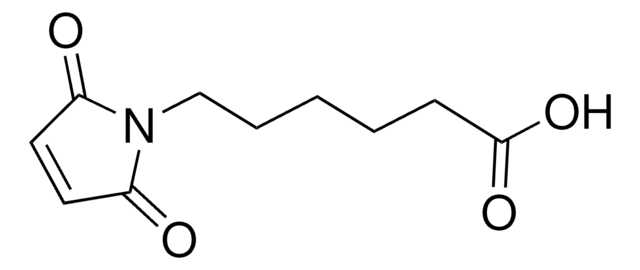Key Documents
870016P
Avanti
23:2 Diyne PC [DC(8,9)PC]
Avanti Research™ - A Croda Brand 870016P, powder
Synonim(y):
1,2-bis(10,12-tricosadiynoyl)-sn-glycero-3-phosphocholine
About This Item
Polecane produkty
Postać
powder
opakowanie
pkg of 1 × 1 g (870016P-1g)
pkg of 1 × 200 mg (870016P-200mg)
pkg of 1 × 25 mg (870016P-25mg)
pkg of 1 × 500 mg (870016P-500mg)
producent / nazwa handlowa
Avanti Research™ - A Croda Brand 870016P
Warunki transportu
dry ice
temp. przechowywania
−20°C
ciąg SMILES
[O-]P(OCC[N+](C)(C)C)(OC[C@]([H])(OC(CCCCCCCCC#CC#CCCCCCCCCCC)=O)COC(CCCCCCCCC#CC#CCCCCCCCCCC)=O)=O
InChI
1S/C54H92NO8P/c1-6-8-10-12-14-16-18-20-22-24-26-28-30-32-34-36-38-40-42-44-46-53(56)60-50-52(51-62-64(58,59)61-49-48-55(3,4)5)63-54(57)47-45-43-41-39-37-35-33-31-29-27-25-23-21-19-17-15-13-11-9-7-2/h52H,6-23,32-51H2,1-5H3/t52-/m1/s1
Klucz InChI
IDBJTPGHAMAEMV-OIVUAWODSA-N
Opis ogólny
Zastosowanie
Opakowanie
Informacje prawne
Kod klasy składowania
11 - Combustible Solids
Certyfikaty analizy (CoA)
Poszukaj Certyfikaty analizy (CoA), wpisując numer partii/serii produktów. Numery serii i partii można znaleźć na etykiecie produktu po słowach „seria” lub „partia”.
Masz już ten produkt?
Dokumenty związane z niedawno zakupionymi produktami zostały zamieszczone w Bibliotece dokumentów.
Nasz zespół naukowców ma doświadczenie we wszystkich obszarach badań, w tym w naukach przyrodniczych, materiałoznawstwie, syntezie chemicznej, chromatografii, analityce i wielu innych dziedzinach.
Skontaktuj się z zespołem ds. pomocy technicznej
![23:2 Diyne PE [DC(8,9)PE] 1,2-bis(10,12-tricosadiynoyl)-sn-glycero-3-phosphoethanolamine, powder](/deepweb/assets/sigmaaldrich/product/images/228/422/4e95f75c-14fa-4117-a383-2eff73fa927f/640/4e95f75c-14fa-4117-a383-2eff73fa927f.jpg)







